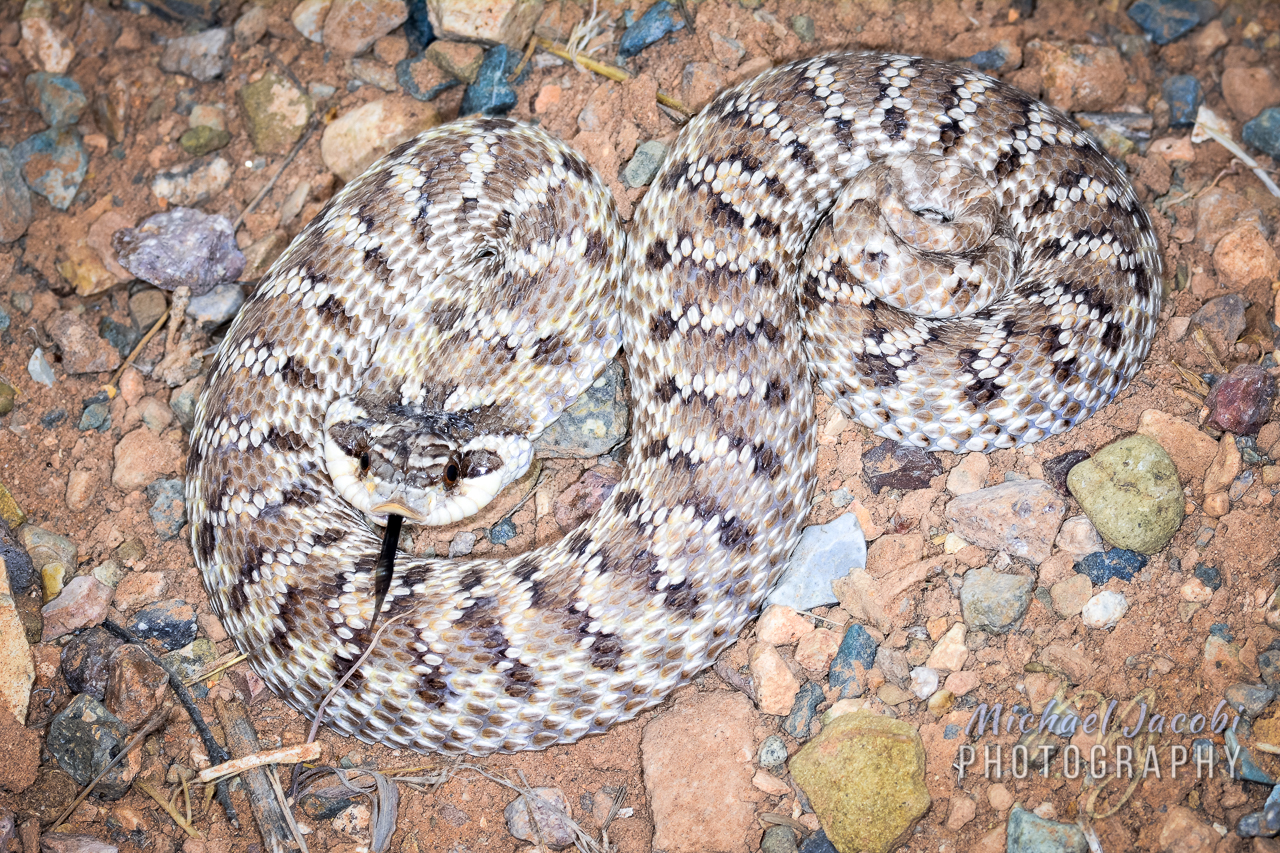My left hand suddenly became wet and I noticed a few droplets of blood on my hiking shorts. Dripping from my wrist, the blood fell to coagulate on the dusty red earth beside Highway 81. I had been driving toward the Mexico border and gasping in awe at the spectacular lightning storms over the Animas and Peloncillo Mountains. Now I was standing on the roadside. It was still at least an hour until sunset.
I uncurled the fingers of my left hand to view the source of the warm wet blood. In my palm rested a perfectly healthy Texas Horned Lizard. I had temporarily restrained about a dozen of these spiky broad and flat lizards over the past few weeks to pose them for roadside images, but this is the first that had squirted blood from its eyes.
Ethology is the science of animal behavior. Ethologists use the term tonic immobility or thanatosis to describe what we like to call playing possum. It also is known as apparent death or by slang terms like feigning death or playing dead.
The Virginia Opossum or "possum" is a marsupial that has an involuntary response to perceived threats that results in mimicking both the appearance and smell of a sickly or dead animal. But it is far from the only animal that has evolved apparent death behavior. Even animals you might think of as invincible predators like sharks have highly developed tonic immobility behaviors. I've witnessed similar behavior in spiders, beetles, treefrogs, and iguanas, and in alligators turned onto their backs.
Horned lizards have suffered being called horny toads or horned frogs. These thorny reptiles can hardly be mistaken for amphibians, but their scientific name Phrynosoma means "toad-bodied". Their rough scales are ornamented with incredible spikes and they have broad and flattened bodies. Their coloration serves as effective camouflage. But they also employ a wide variety of means to avoid predation. When a potential threat approached their first defense is to remain still to avoid detection. If approached more closely they often will run in short bursts, zig-zagging and stopping abruptly to confuse the predator's visual acuity. Should the threat continue they puff up their bodies to erect their spines and appear larger and more difficult to swallow. At least eight species, including the Texas species P. cornutum I have encountered in southwestern New Mexico, also have the ability to squirt an aimed stream of blood from the corners of the eyes. This blood spurt may reach a distance of up to 5 feet. They squirt blood by restricting the blood flow leaving the head, which increases blood pressure and ruptures tiny vessels around their eyelids. This incredible behavior not only confuses predators, but also the blood tastes foul to some predators like canines and felines. Both wild and domestic dogs and cats pose a threat to horned lizards, as do predatory birds that apparently don't find the blood squirting so unappealing. For the record, this "ocular autohemorrhaging" has also been documented in other lizards including the Yarrow's Spiny Lizard that I also encounter regularly here in southwestern New Mexico.
Texas Horned Lizard (Phrynosoma cornutum), Hidalgo County, New Mexico
Another reptile from this region exhibits interesting behavior when threatened. A hog-nosed snake will roll onto its back to appear to be dead when threatened by a predator, while a foul-smelling, volatile fluid oozes from its body. Its gaping mouth often is bloody. However, as I mentioned in an earlier blog entry, it can be 'tricked' into erecting its tongue. As I photographed this Mexican Hog-nosed Snake (Heterodon kennerlyi), a guy I met on the road was wagging his finger at the snake to get it to flick out its tongue for a better image.
A Mexican Hog-nosed Snake feigns death
Other threat displays do not feign sickness or death. Rattlesnakes have evolved a familiar warning, but in truth many snakes rattle their tails. Rattlesnakes, members of the most highly evolved of all snakes - pitvipers, just have taken it to another level. They have hollow, interlocking segments of keratin [modified scales] at the tips of their tails. The contraction of tail muscles produces an incredible warning sound, but a kingsnake or other snake can produce a nice buzzing by vibrating its tail when in contact with dry leaves. Still, the rattlesnake has perfected the warning. It can vibrate its tail up to 50 times a minute and maintain the pace for three hours. One night two Western Diamondback Rattlesnakes I interacted with backed away from me and both ended up secreted in the grasses and other cover surrounding an agave. I forgot to record GPS coordinates and returned to the spot ten or fifteen minutes later to do so and found them still buzzing away and the sound could be heard thirty or more feet from the bush.
And, of course, many snakes hiss and puff up their bodies to appear larger. Chameleons are just one well-known lizard that, like our horned lizard, inflates its body when threatened. Birds, mammals ... there are probably few animals that don't have representatives that employ the 'look bigger" defense. But let's go back to snakes ... One dramatic example of puffing up the body in threat display is the cobra's hood. Cobra skeletons have special elongated ribs that erect the loose skin and scales of their necks when muscles are contracted and they flatten their necks. This hood may be displayed in the familiar defensive pose, but also as a cobra is moving as it slithers away. Our Mexican Hog-nosed Snake has a very cobra-like hood. Last night's snake never went as far as tonic immobility or apparent death. It huffed and puffed like most snakes, but also flattened and spread its hood to great effect. You can see its flattened neck "hood" in the image below.
Mexican Hog-nosed Snake (Heterodon kennerlyi), Grant County, New Mexico


